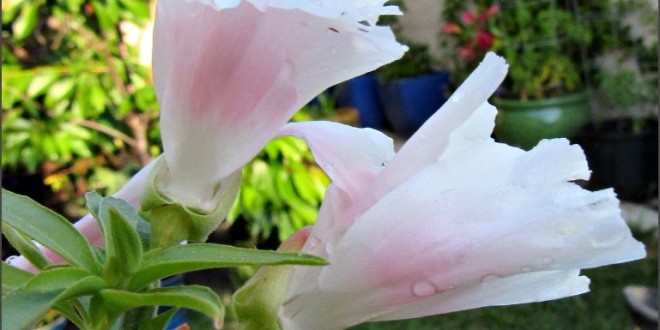Godetia (Clarkia Amoena) is a spring blooming annual flower. It is native to western North America, from British Colombia down to California. Many people consider this easy to grow flower as a wildflower.
Godetia plant grows 12″ – 30″, depending upon variety. The plant grows quickly. It blooms in the spring, in just 30 to 60 days. It produces Azalea-like blooms. Colors include white, pink, purple, lavender, and red.
Godetia was name after Swiss botanist Charles H. Godet.
Other Names: Farewell to Spring
Propagation:
Godetia are grown from seeds. Godetia seeds can be directly seeded into your flower garden, or started indoors four to six weeks before the last frost date in your area. Sow seeds early in the season, and cover lightly with 1/8″ of fine garden or potting soil.
Ideal plant spacing is 16″ -20″. Godetia plants do not like to be crowded.
How to Grow Godetia Plants:
Grow Godetia in full sun. Plants need lots for sun, or they will grow slowly. They grow well in average to rich soil. Mix in compost when planting. Keep the soil moist, not wet. Add a general purpose fertilizer when planting them, then once a month after that.
Godetia is easy to grow. As wildflowers, they require little care. In the home garden, mulch around them to help retain soil moisture, and to keep the weeds down.
Flowers bloom early to mid summer. Taller varieties may require staking.
Godetia are good re-seeders. Plant them where they can drop their seeds and grow undisturbed for years. If you allow them to reseed in a location, you will likely need to thin new plants in the spring.
Non-toxic
Insect and Disease:
Insect and disease are not a common problem. Use insecticides, repellents, and fungicides, as needed.
Genus: Clarkia (KLAR-kee-uh) (Info)
Species: amoena (am-oh-EN-uh) (Info)
Synonym: Godetia amoena
Synonym: Godetia grandiflora
Category:
Annuals
Height:
18-24 in. (45-60 cm)
24-36 in. (60-90 cm)
Spacing:
12-15 in. (30-38 cm)
15-18 in. (38-45 cm)
18-24 in. (45-60 cm)
Hardiness:
Not Applicable
Sun Exposure:
Full Sun
Sun to Partial Shade
Danger:
Unknown – Tell us
Bloom Color:
Pale Pink
Pink
Rose/Mauve
Magenta (Pink-Purple)
Fuchsia (Red-Purple)
Bloom Time:
Mid Spring
Late Spring/Early Summer
Mid Summer
Late Summer/Early Fall
Mid Fall
Foliage:
Herbaceous
Other details:
This plant is attractive to bees, butterflies and/or birds
Drought-tolerant; suitable for xeriscaping
Average Water Needs; Water regularly; do not overwater
Self-sows freely; deadhead if you do not want volunteer seedlings next season
Soil pH requirements:
Unknown – Tell us
Patent Information:
Non-patented
Propagation Methods:
From seed; direct sow outdoors in fall
From seed; winter sow in vented containers, coldframe or unheated greenhouse
From seed; sow indoors before last frost
From seed; direct sow after last frost
Seed Collecting:
Allow pods to dry on plant; break open to collect seeds








